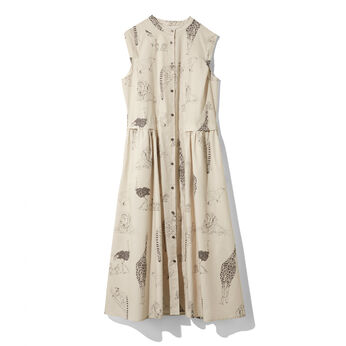Miyajima Kogei Factory Yamazakura rice scoop (shakushi/shamoji)
お申し込み番号:754409
1pc ¥1,320
- Monthly BOX
- Just One
Favourites
Could not add to Favourites. please try again
Removed from Favourites
Favourites registration could not be deleted. please try again
Added to Shopping bag
Failed to add to Shopping bag. please try again
This rice scoop is individually handmade by craftsmen in a workshop in Miyajima, known as the birthplace of shamoji (rice scoops). It has a comfortable length, a handle that is easy to grip, and a slanted tip that makes it easy to collect and scoop rice.
The size and shape fit comfortably in your hand. A beautiful rice scoop. So, do you know the difference between a "shakushi" and a "shamoji"? Generally, a "shamoji" is used to serve rice, and a "shakushi" is used to scoop up soup as well as rice. However, in Miyajima, the rice scoop used to serve rice is called a "shakushi"...interesting.
We will send you a mini letter like this.
Since it is unpainted, make sure to wet it thoroughly before use. (This will prevent rice from sticking to it.) I love the little extra effort. I think it's great to live a life where you can cherish Favourites tools.
As natural wood is used, there are various colors and grain patterns. There may also be knots.
[Miyajima Kogei Seisakusho] We manufacture wooden ladles in Miyajima, Hiroshima Prefecture. The material is mainly wild cherry wood produced in the northern part of Hiroshima Prefecture. While making use of the woodworking techniques and ideas we have cultivated over many years, we are pursuing ladles that fit modern life.
Each stalk is carved out of a wild cherry board.
We carefully carve each piece one by one.
[About Miyajima Shakushi] The origin of Miyajima Shakushi... Around the time of the Kansei era (around 1800), a monk from Shinsenji Temple named Senshin had a dream one night of Benzaiten, who inspired him to make shamoshi from the beautiful lines of her biwa lute. He then taught the people of the island to make them from the sacred wood of Mt. Miyama. The fame of Miyajima Shakushi spread throughout the world, along with the virtue of Senshin, who said that if you eat rice with a shamoshi from this sacred wood, you will be blessed with divine blessings and good fortune. Shamoshi are known as a specialty of Miyajima, but today, various cooking shamoshi and ladle shamoshi are made, making use of this tradition. Miyajima Shakushi have also evolved into an attractive item that conveys the history of Miyajima and Japanese food culture, in addition to their role of serving and plating rice. Another major attraction is that they are made from wild cherry blossoms produced in the rich production areas surrounding Miyajima, and are unpainted. I think it's nice to enjoy the joy of continuing to use your favorite household items and cherish them.
Food's Note also introduces other items from Miyajima Kogei Seisakusho. All of them are easy to use and highly recommended.
Fu, the owner of Food's Note, is also using it. Since it is unpainted, I would like to use it with a little more care. I would like to dry it well before storing it! I think it is a good way of life to take care of your tools and use them for a long time.
As natural wood is used, there are various colors and grain patterns. There may also be knots.
あなたにおすすめのアイテム
このアイテムを含むカテゴリ
Favourites
Could not add to Favourites. please try again
Removed from Favourites
Favourites registration could not be deleted. please try again
Added to Shopping bag
Failed to add to Shopping bag. please try again
Please check your input.
Please check your input.

![フェリシモの雑貨Kraso[クラソ]|宮島工芸製作所 ヤマザクラの杓子〈しゃくし・しゃもじ〉|杓文字(しゃもじ)の産地として知られる宮島の工房で職人さんが1点1点手作りしている、ごはん用のしゃもじです。使いやすい長さで持ち手部分はしっかりと握りやすく、ななめになった先でご飯を集め取りやすい。 フェリシモの雑貨Kraso[クラソ]|宮島工芸製作所 ヤマザクラの杓子〈しゃくし・しゃもじ〉|杓文字(しゃもじ)の産地として知られる宮島の工房で職人さんが1点1点手作りしている、ごはん用のしゃもじです。使いやすい長さで持ち手部分はしっかりと握りやすく、ななめになった先でご飯を集め取りやすい。](https://www.felissimo.co.jp/dw/image/v2/BGGR_PRD/on/demandware.static/-/Sites-89/default/dw035d7e7d/pic/754409-productcuts-01-99999999-S.jpg)
![フェリシモの雑貨Kraso[クラソ]|宮島工芸製作所 ヤマザクラの杓子〈しゃくし・しゃもじ〉|手にしっくりとなじむサイズ・カタチ。美しいしゃもじ。さてさて……「杓子(しゃくし)と杓文字(しゃもじ)」について、違いはご存じでしょうか。一般的には、ご飯をよそうものが「しゃもじ(杓文字)」で、ご飯だけでなく汁などをすくうのが「しゃくし(杓子)」と呼んでいると思います。が、なんと宮島では、ご飯をよそう杓文字を杓子と呼んでいるそう……おもしろい。 フェリシモの雑貨Kraso[クラソ]|宮島工芸製作所 ヤマザクラの杓子〈しゃくし・しゃもじ〉|手にしっくりとなじむサイズ・カタチ。美しいしゃもじ。さてさて……「杓子(しゃくし)と杓文字(しゃもじ)」について、違いはご存じでしょうか。一般的には、ご飯をよそうものが「しゃもじ(杓文字)」で、ご飯だけでなく汁などをすくうのが「しゃくし(杓子)」と呼んでいると思います。が、なんと宮島では、ご飯をよそう杓文字を杓子と呼んでいるそう……おもしろい。](https://www.felissimo.co.jp/dw/image/v2/BGGR_PRD/on/demandware.static/-/Sites-89/default/dw0fd5703f/pic/754409-productcuts-02-99999999-S.jpg)
![フェリシモの雑貨Kraso[クラソ]|宮島工芸製作所 ヤマザクラの杓子〈しゃくし・しゃもじ〉 フェリシモの雑貨Kraso[クラソ]|宮島工芸製作所 ヤマザクラの杓子〈しゃくし・しゃもじ〉](https://www.felissimo.co.jp/dw/image/v2/BGGR_PRD/on/demandware.static/-/Sites-89/default/dw898f33b6/pic/754409-productcuts-03-99999999-S.jpg)
![フェリシモの雑貨Kraso[クラソ]|宮島工芸製作所 ヤマザクラの杓子〈しゃくし・しゃもじ〉 フェリシモの雑貨Kraso[クラソ]|宮島工芸製作所 ヤマザクラの杓子〈しゃくし・しゃもじ〉](https://www.felissimo.co.jp/dw/image/v2/BGGR_PRD/on/demandware.static/-/Sites-89/default/dw9c96cb34/pic/754409-productcuts-04-99999999-S.jpg)
![フェリシモの雑貨Kraso[クラソ]|宮島工芸製作所 ヤマザクラの杓子〈しゃくし・しゃもじ〉 フェリシモの雑貨Kraso[クラソ]|宮島工芸製作所 ヤマザクラの杓子〈しゃくし・しゃもじ〉](https://www.felissimo.co.jp/dw/image/v2/BGGR_PRD/on/demandware.static/-/Sites-89/default/dw5d339392/pic/754409-productcuts-05-99999999-S.jpg)
![フェリシモの雑貨Kraso[クラソ]|宮島工芸製作所 ヤマザクラの杓子〈しゃくし・しゃもじ〉 フェリシモの雑貨Kraso[クラソ]|宮島工芸製作所 ヤマザクラの杓子〈しゃくし・しゃもじ〉](https://www.felissimo.co.jp/dw/image/v2/BGGR_PRD/on/demandware.static/-/Sites-89/default/dwb34575c0/pic/754409-productcuts-06-99999999-S.jpg)
![フェリシモの雑貨Kraso[クラソ]|宮島工芸製作所 ヤマザクラの杓子〈しゃくし・しゃもじ〉|こんなミニレターを一緒にお届けします。 フェリシモの雑貨Kraso[クラソ]|宮島工芸製作所 ヤマザクラの杓子〈しゃくし・しゃもじ〉|こんなミニレターを一緒にお届けします。](https://www.felissimo.co.jp/dw/image/v2/BGGR_PRD/on/demandware.static/-/Sites-89/default/dw29752f7e/pic/754409-productcuts-07-99999999-S.jpg)
![フェリシモの雑貨Kraso[クラソ]|宮島工芸製作所 ヤマザクラの杓子〈しゃくし・しゃもじ〉 フェリシモの雑貨Kraso[クラソ]|宮島工芸製作所 ヤマザクラの杓子〈しゃくし・しゃもじ〉](https://www.felissimo.co.jp/dw/image/v2/BGGR_PRD/on/demandware.static/-/Sites-89/default/dwea8d5102/pic/754409-productcuts-08-99999999-S.jpg)
![フェリシモの雑貨Kraso[クラソ]|宮島工芸製作所 ヤマザクラの杓子〈しゃくし・しゃもじ〉 フェリシモの雑貨Kraso[クラソ]|宮島工芸製作所 ヤマザクラの杓子〈しゃくし・しゃもじ〉](https://www.felissimo.co.jp/dw/image/v2/BGGR_PRD/on/demandware.static/-/Sites-89/default/dweb550746/pic/754409-productcuts-09-99999999-S.jpg)
![フェリシモの雑貨Kraso[クラソ]|宮島工芸製作所 ヤマザクラの杓子〈しゃくし・しゃもじ〉|無塗装なので、しっかり水に濡らしてから使いましょう。(お米がつきにくくなります)そんなひと手間も愛おしい。お気に入りの道具を大切に使う暮らしっていいな、と思います。 フェリシモの雑貨Kraso[クラソ]|宮島工芸製作所 ヤマザクラの杓子〈しゃくし・しゃもじ〉|無塗装なので、しっかり水に濡らしてから使いましょう。(お米がつきにくくなります)そんなひと手間も愛おしい。お気に入りの道具を大切に使う暮らしっていいな、と思います。](https://www.felissimo.co.jp/dw/image/v2/BGGR_PRD/on/demandware.static/-/Sites-89/default/dwd4d271e2/pic/754409-productcuts-10-99999999-S.jpg)
![フェリシモの雑貨Kraso[クラソ]|宮島工芸製作所 ヤマザクラの杓子〈しゃくし・しゃもじ〉|天然木を使用しているため、色や木目の出方はいろいろです。節がある場合もあります。 フェリシモの雑貨Kraso[クラソ]|宮島工芸製作所 ヤマザクラの杓子〈しゃくし・しゃもじ〉|天然木を使用しているため、色や木目の出方はいろいろです。節がある場合もあります。](https://www.felissimo.co.jp/dw/image/v2/BGGR_PRD/on/demandware.static/-/Sites-89/default/dwcacf7082/pic/754409-productcuts-11-99999999-S.jpg)
![フェリシモの雑貨Kraso[クラソ]|宮島工芸製作所 ヤマザクラの杓子〈しゃくし・しゃもじ〉|【宮島工芸製作所】広島県の宮島で木製杓子の製造をしています。素材は主に広島県北地域から産出されるヤマザクラ。長年培ってきた木工技術・思考を生かしながらも、現代の生活に合う杓子を追及しています。 フェリシモの雑貨Kraso[クラソ]|宮島工芸製作所 ヤマザクラの杓子〈しゃくし・しゃもじ〉|【宮島工芸製作所】広島県の宮島で木製杓子の製造をしています。素材は主に広島県北地域から産出されるヤマザクラ。長年培ってきた木工技術・思考を生かしながらも、現代の生活に合う杓子を追及しています。](https://www.felissimo.co.jp/dw/image/v2/BGGR_PRD/on/demandware.static/-/Sites-89/default/dw25af4a47/pic/754409-productcuts-12-99999999-S.jpg)
![フェリシモの雑貨Kraso[クラソ]|宮島工芸製作所 ヤマザクラの杓子〈しゃくし・しゃもじ〉 フェリシモの雑貨Kraso[クラソ]|宮島工芸製作所 ヤマザクラの杓子〈しゃくし・しゃもじ〉](https://www.felissimo.co.jp/dw/image/v2/BGGR_PRD/on/demandware.static/-/Sites-89/default/dwf4644d28/pic/754409-productcuts-13-99999999-S.jpg)
![フェリシモの雑貨Kraso[クラソ]|宮島工芸製作所 ヤマザクラの杓子〈しゃくし・しゃもじ〉|ヤマザクラの板から、1本1本くり抜いていきます。 フェリシモの雑貨Kraso[クラソ]|宮島工芸製作所 ヤマザクラの杓子〈しゃくし・しゃもじ〉|ヤマザクラの板から、1本1本くり抜いていきます。](https://www.felissimo.co.jp/dw/image/v2/BGGR_PRD/on/demandware.static/-/Sites-89/default/dw23679ba5/pic/754409-productcuts-14-99999999-S.jpg)
![フェリシモの雑貨Kraso[クラソ]|宮島工芸製作所 ヤマザクラの杓子〈しゃくし・しゃもじ〉|ひとつひとつ、ていねいに削っていきます。 フェリシモの雑貨Kraso[クラソ]|宮島工芸製作所 ヤマザクラの杓子〈しゃくし・しゃもじ〉|ひとつひとつ、ていねいに削っていきます。](https://www.felissimo.co.jp/dw/image/v2/BGGR_PRD/on/demandware.static/-/Sites-89/default/dw14b227dc/pic/754409-productcuts-15-99999999-S.jpg)
![フェリシモの雑貨Kraso[クラソ]|宮島工芸製作所 ヤマザクラの杓子〈しゃくし・しゃもじ〉 フェリシモの雑貨Kraso[クラソ]|宮島工芸製作所 ヤマザクラの杓子〈しゃくし・しゃもじ〉](https://www.felissimo.co.jp/dw/image/v2/BGGR_PRD/on/demandware.static/-/Sites-89/default/dw86becfc3/pic/754409-productcuts-16-99999999-S.jpg)
![フェリシモの雑貨Kraso[クラソ]|宮島工芸製作所 ヤマザクラの杓子〈しゃくし・しゃもじ〉|【宮島杓子(しゃくし)のこと】宮島杓子の由来……寛政の頃(1800年頃)、神泉寺の僧・誓真という人が、ある夜、弁財天の夢を見てその琵琶の形の美しい線から杓子を考察し、御山の神木を使って作ることを島の人々に教えました。この神木の杓子でご飯をいただけば、ご神徳を蒙り(こうむり)福運をまねくという誓真上人の高徳とともに、宮島杓子の名声は世に広く知られることとなりました。しゃもじは宮島の名産品として知られていますが、現在ではその伝統を生かして、さまざまな調理杓子・お玉杓子などが作られています。また宮島杓子は、ご飯をよそう・盛り付けるという役割だけでなく、宮島の歴史や日本の食文化を伝えるアイテムとして魅力的に進化。宮島の近隣地域の豊かな産地から産出されるヤマザクラを使用していることや、無塗装であることも大きな魅力。気に入った暮らしの道具を大切に使い続ける楽しさを味わえるのもいいなと思います。 フェリシモの雑貨Kraso[クラソ]|宮島工芸製作所 ヤマザクラの杓子〈しゃくし・しゃもじ〉|【宮島杓子(しゃくし)のこと】宮島杓子の由来……寛政の頃(1800年頃)、神泉寺の僧・誓真という人が、ある夜、弁財天の夢を見てその琵琶の形の美しい線から杓子を考察し、御山の神木を使って作ることを島の人々に教えました。この神木の杓子でご飯をいただけば、ご神徳を蒙り(こうむり)福運をまねくという誓真上人の高徳とともに、宮島杓子の名声は世に広く知られることとなりました。しゃもじは宮島の名産品として知られていますが、現在ではその伝統を生かして、さまざまな調理杓子・お玉杓子などが作られています。また宮島杓子は、ご飯をよそう・盛り付けるという役割だけでなく、宮島の歴史や日本の食文化を伝えるアイテムとして魅力的に進化。宮島の近隣地域の豊かな産地から産出されるヤマザクラを使用していることや、無塗装であることも大きな魅力。気に入った暮らしの道具を大切に使い続ける楽しさを味わえるのもいいなと思います。](https://www.felissimo.co.jp/dw/image/v2/BGGR_PRD/on/demandware.static/-/Sites-89/default/dwa1993b56/pic/754409-productcuts-17-99999999-S.jpg)
![フェリシモの雑貨Kraso[クラソ]|宮島工芸製作所 ヤマザクラの杓子〈しゃくし・しゃもじ〉 フェリシモの雑貨Kraso[クラソ]|宮島工芸製作所 ヤマザクラの杓子〈しゃくし・しゃもじ〉](https://www.felissimo.co.jp/dw/image/v2/BGGR_PRD/on/demandware.static/-/Sites-89/default/dwca09c0aa/pic/754409-productcuts-18-99999999-S.jpg)
![フェリシモの雑貨Kraso[クラソ]|宮島工芸製作所 ヤマザクラの杓子〈しゃくし・しゃもじ〉|フーズノートでは、宮島工芸製作所さんのほかのアイテムもご案内しています。どれも使いやすくておすすめです。 フェリシモの雑貨Kraso[クラソ]|宮島工芸製作所 ヤマザクラの杓子〈しゃくし・しゃもじ〉|フーズノートでは、宮島工芸製作所さんのほかのアイテムもご案内しています。どれも使いやすくておすすめです。](https://www.felissimo.co.jp/dw/image/v2/BGGR_PRD/on/demandware.static/-/Sites-89/default/dw059b1f7c/pic/754409-productcuts-19-99999999-S.jpg)
![フェリシモの雑貨Kraso[クラソ]|宮島工芸製作所 ヤマザクラの杓子〈しゃくし・しゃもじ〉|フーズノート店主Fuも愛用中。無塗装なので少していねいに使いたいと思います。よく乾かしてからしまうとか!道具を大切に長く使うという暮らし方……いいなと思うのです。 フェリシモの雑貨Kraso[クラソ]|宮島工芸製作所 ヤマザクラの杓子〈しゃくし・しゃもじ〉|フーズノート店主Fuも愛用中。無塗装なので少していねいに使いたいと思います。よく乾かしてからしまうとか!道具を大切に長く使うという暮らし方……いいなと思うのです。](https://www.felissimo.co.jp/dw/image/v2/BGGR_PRD/on/demandware.static/-/Sites-89/default/dw0773b360/pic/754409-productcuts-20-99999999-S.jpg)
![フェリシモの雑貨Kraso[クラソ]|宮島工芸製作所 ヤマザクラの杓子〈しゃくし・しゃもじ〉|天然木を使用しているため、色や木目の出方はいろいろです。節がある場合もあります。 フェリシモの雑貨Kraso[クラソ]|宮島工芸製作所 ヤマザクラの杓子〈しゃくし・しゃもじ〉|天然木を使用しているため、色や木目の出方はいろいろです。節がある場合もあります。](https://www.felissimo.co.jp/dw/image/v2/BGGR_PRD/on/demandware.static/-/Sites-89/default/dw5ab1f78c/pic/754409-productcuts-21-99999999-S.jpg)
![フェリシモの雑貨Kraso[クラソ]|宮島工芸製作所 ヤマザクラの杓子〈しゃくし・しゃもじ〉 フェリシモの雑貨Kraso[クラソ]|宮島工芸製作所 ヤマザクラの杓子〈しゃくし・しゃもじ〉](https://www.felissimo.co.jp/dw/image/v2/BGGR_PRD/on/demandware.static/-/Sites-89/default/dwed17f6cf/pic/754409-productcuts-22-99999999-S.jpg)
![フェリシモの雑貨Kraso[クラソ]|宮島工芸製作所 ヤマザクラの杓子〈しゃくし・しゃもじ〉 フェリシモの雑貨Kraso[クラソ]|宮島工芸製作所 ヤマザクラの杓子〈しゃくし・しゃもじ〉](https://www.felissimo.co.jp/dw/image/v2/BGGR_PRD/on/demandware.static/-/Sites-89/default/dw6c2a8a8a/pic/754409-productcuts-23-99999999-S.jpg)

![Couturier[クチュリエ] | はじめてさんのきほんのきかぎ針編みぐるみレッスン](https://www.felissimo.co.jp/dw/image/v2/BGGR_PRD/on/demandware.static/-/Sites-90/default/dw7061c04f/pic/143316-thumbnail1-01-99999999-S.jpg?sw=346)
![el:ment[エルメント] | シロフクロウ播州織カットジャガードあずまバッグ](https://www.felissimo.co.jp/dw/image/v2/BGGR_PRD/on/demandware.static/-/Sites-257/default/dwed96e528/pic/724389-thumbnail1-01-99999999-S.jpg?sw=346)



![L'AMIPLUS[ラミプリュス] | レガーロパピロ×ラミプリュス撥水トートバッグ](https://www.felissimo.co.jp/dw/image/v2/BGGR_PRD/on/demandware.static/-/Sites-240/default/dw91feafac/pic/846551-thumbnail1-01-99999999-S.jpg?sw=346)


![L'AMIPLUS[ラミプリュス] | 透け柄アクセントのかるトートバッグ](https://www.felissimo.co.jp/dw/image/v2/BGGR_PRD/on/demandware.static/-/Sites-240/default/dwe71df79e/pic/121825-thumbnail1-01-99999999-S.jpg?sw=346)
![Couturier[クチュリエ] | はじめてさんのきほんのき今から始めるミシンレッスン](https://www.felissimo.co.jp/dw/image/v2/BGGR_PRD/on/demandware.static/-/Sites-90/default/dw4d6aaa6c/pic/143260-thumbnail1-01-99999999-S.jpg?sw=346)





![Couturier[クチュリエ] | 今日のブランチはどれかぎ針カフェポーチ](https://www.felissimo.co.jp/dw/image/v2/BGGR_PRD/on/demandware.static/-/Sites-90/default/dw43f68119/pic/613349-thumbnail1-01-99999999-S.jpg?sw=346)


![Couturier[クチュリエ] | トルコタイルレース編み](https://www.felissimo.co.jp/dw/image/v2/BGGR_PRD/on/demandware.static/-/Sites-90/default/dwe4f5490e/pic/435156-thumbnail1-01-99999999-S.jpg?sw=346)
![MEDE19F [メデ・ジュウキュウ] | エンブロイダリーワンピース〈BK〉MD19](https://www.felissimo.co.jp/dw/image/v2/BGGR_PRD/on/demandware.static/-/Sites-204/default/dw983825f2/pic/353789-thumbnail1-01-99999999-S.jpg?sw=346)


![Couturier[クチュリエ] | 守っていきたい動物たちのぽんぽん](https://www.felissimo.co.jp/dw/image/v2/BGGR_PRD/on/demandware.static/-/Sites-90/default/dwb92a40b6/pic/692378-thumbnail1-01-99999999-S.jpg?sw=346)